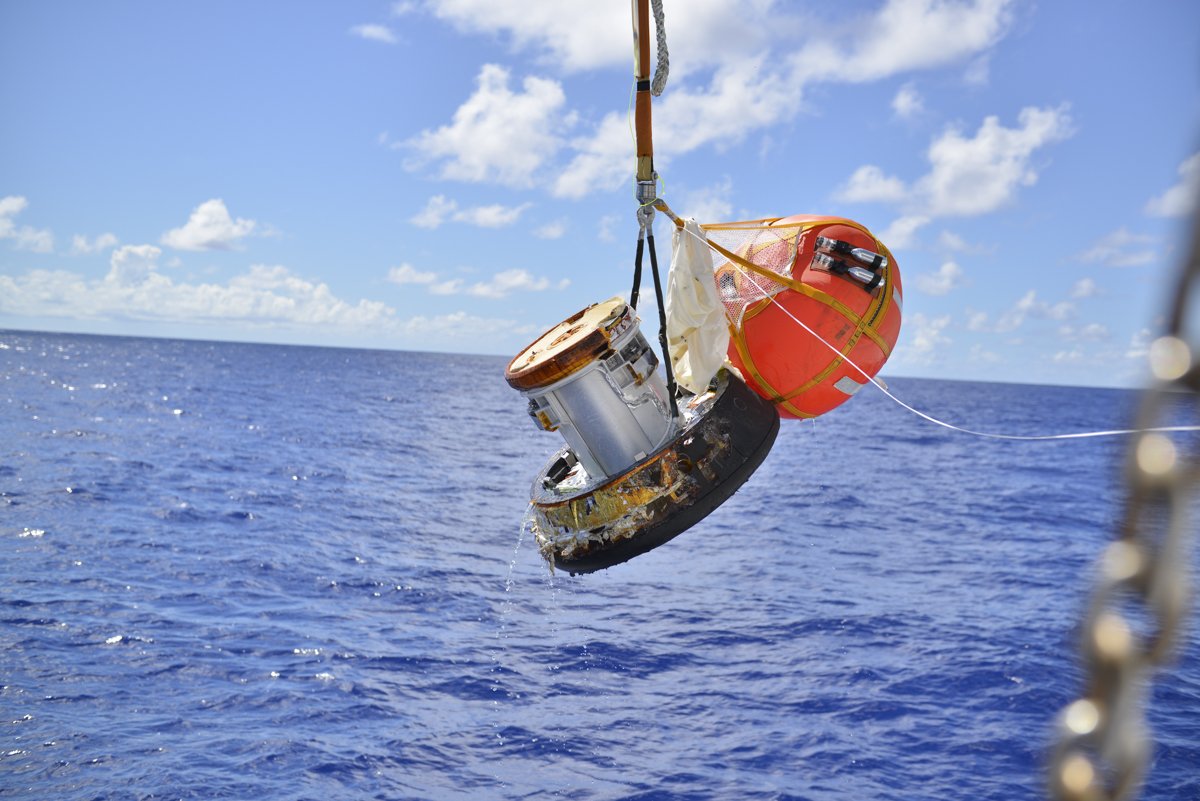Japanese Space Capsule Prototype Survives Fiery Fall to Earth

After leaving the International Space Station last week, a Japanese cargo spacecraft dropped a small capsule of science experiments into the Pacific Ocean before falling to its fiery demise in Earth's atmosphere.
Before it was intentionally incinerated upon reentry, the HTV-7 cargo resupply ship spent 41 days at the International Space Station. The Expedition 57 crew used the station's Canadarm2 robotic arm to send it off on Wednesday (Nov. 7). On board was the HTV Small Re-Entry Capsule (HSRC), a small cone-shaped capsule that would become the first Japanese spacecraft to bring experiments back to Earth from the space station.
Following a deorbit burn, the HTV-7 entered Earth's atmosphere on Nov. 10 at 4:14 p.m. EST (2114 GMT), and the little capsule separated from its mothership and began its own descent. It floated down to Earth via parachute and splashed down off the southern coast of Marcus Island, the Japan Aerospace Exploration Agency (JAXA) tweeted. The capsule's contents were then brought to JAXA headquarters at the Tsukuba Space Center for analysis. [Japan's Huge HTV Space Truck Explained (Infographic)]
Inside the HSRC were samples of protein crystals grown at the space station. These microgravity-grown crystals can be used to study the structure of the proteins in greater detail than is possible on Earth, and understanding their structures could help researchers develop new pharmaceutical drugs, NASA officials said.
During this mission, which was the first test flight of the HSRC, the little capsule demonstrated its flight capabilities as well as its ability to protect its internal payload against the extreme temperatures of re-entry. "We expect that these efforts will lead to securing flexibility in our future space flight activities," JAXA president Hiroshi Yamakawa said in a statement.
With a successful test mission under its belt, JAXA can start using the HSRC to bring science experiments back to Earth using a Japanese aircraft, rather than having to hitch a ride with SpaceX's Dragon capsule — the only cargo spacecraft built to survive re-entry. JAXA's next HTV cargo resupply mission is scheduled to launch to the space station in mid-2019.
Email Hanneke Weitering at hweitering@space.com or follow her @hannekescience. Follow us on Twitter @Spacedotcom and on Facebook. Original article on Space.com.
Breaking space news, the latest updates on rocket launches, skywatching events and more!

Hanneke Weitering is a multimedia journalist in the Pacific Northwest reporting on the future of aviation at FutureFlight.aero and Aviation International News and was previously the Editor for Spaceflight and Astronomy news here at Space.com. As an editor with over 10 years of experience in science journalism she has previously written for Scholastic Classroom Magazines, MedPage Today and The Joint Institute for Computational Sciences at Oak Ridge National Laboratory. After studying physics at the University of Tennessee in her hometown of Knoxville, she earned her graduate degree in Science, Health and Environmental Reporting (SHERP) from New York University. Hanneke joined the Space.com team in 2016 as a staff writer and producer, covering topics including spaceflight and astronomy. She currently lives in Seattle, home of the Space Needle, with her cat and two snakes. In her spare time, Hanneke enjoys exploring the Rocky Mountains, basking in nature and looking for dark skies to gaze at the cosmos.

